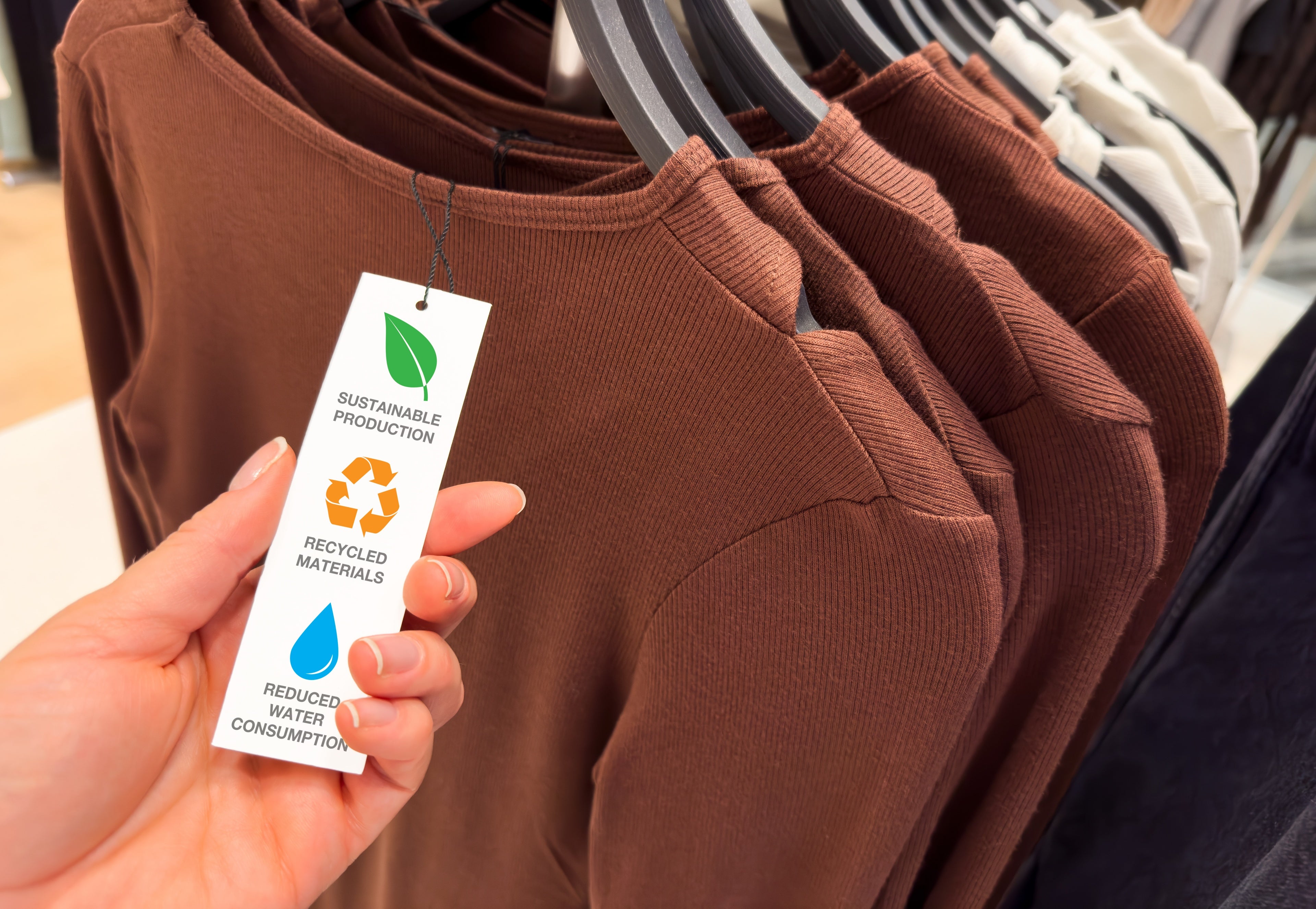Cape Town Sustainable Fashion: Environmentally Friendly Trends to Watch
Cape Town Sustainable Fashion: Environmentally Friendly Trends to Watch
Blog Article
Remain Ahead of the Contour by Checking Out Innovative Style Patterns
In a market as vibrant as style, remaining ahead involves even more than simply following existing patterns-- it requires an exploration of development. Smart fabrics, as an example, are transforming garments right into functional masterpieces, while 3D printing is reinventing design processes with its adjustable, waste-reducing capacities. As sustainability ends up being a foundation, technologies like environmentally friendly products and round fashion techniques are improving ecological duty - Cape Town Sustainable Fashion. Furthermore, the convergence of modern technology and style heralds a brand-new period of consumer interaction. How, then, can these emerging trends redefine the future of fashion, and what effects do they hold for brands seeking to flourish in this progressing landscape?

Accepting Smart Textiles
In recent years, the apparel industry has actually witnessed a transformative shift with the combination of wise textiles, an advanced development that blends technology with textile. This advancement stands for not only a combination of looks and capability yet also a significant leap towards sustainability and personalization in vogue. Smart fabrics, additionally referred to as e-textiles, embed sophisticated electronics such as sensing units and conductive strings within the material, making it possible for garments to interact with the user or the setting.
These fabrics are designed to monitor physical specifications, such as heart rate or body temperature level, providing real-time health analytics. Beyond wellness applications, smart textiles are likewise being utilized for adaptive garments, which can transform shade or pattern in reaction to environmental stimulations, thus offering a dynamic fashion experience.
Additionally, the development of energy-harvesting fabrics that generate power from motion or sunlight is paving the way for self-dependent wearable technology. This innovation is appealing to environmentally mindful consumers and designers intending to lower the environmental impact of fashion. As research and development in this area advance, clever fabrics are expected to become progressively common, reshaping the landscape of contemporary fashion with their multifunctional capabilities.
The Increase of 3D Printing
Changing the manufacturing landscape, 3D printing has emerged as a game-changer in the apparel industry. This cutting-edge modern technology has made it possible for developers to push the boundaries of creative thinking, generating detailed and tailored garments that were previously unbelievable. By leveraging electronic style and additive production, 3D printing promotes the creation of complex geometries and patterns, permitting developers to try out brand-new appearances and frameworks.
A noteworthy advantage of 3D printing in vogue is its ability to generate on-demand, lessening waste and reducing supply needs. This efficiency not only maximizes production procedures however likewise enables for rapid prototyping, allowing designers to bring their visions to life in a shorter duration. In addition, 3D printing supports personalization to a level unparalleled by standard techniques, using individualized fits and one-of-a-kind designs customized to specific consumer preferences.
The surge of 3D printing has also equalized style, making it accessible to arising developers who can currently fabricate premium items without substantial financial investment in standard manufacturing facilities. As modern technology remains to advance, the apparel industry is positioned to harness the full capacity of 3D printing, exploring brand-new products and methods that will unquestionably redefine exactly how style is developed and produced.
Sustainable Fashion Innovations
As the fashion industry faces journalism requirement for environmental obligation, sustainable fashion innovations have actually emerged at the forefront of transformative change. The growing awareness of environmental effect has fueled a change in the direction of more eco-conscious techniques and materials. Brand names and developers are now focusing on sustainability, including techniques that minimize waste and minimize carbon footprints.
One considerable growth is the surge of circular fashion, which emphasizes recycling and upcycling to prolong the lifecycle of garments. This strategy not just decreases waste but likewise motivates customers to embrace a more mindful technique to clothing usage. In addition, the usage of sustainable products, such as natural cotton, click over here now hemp, and recycled polyester, has gotten grip. These products need much less water and energy during manufacturing, considerably decreasing environmental impact.
One more breakthrough hinges on the fostering of innovative dyeing strategies that use natural dyes or waterless processes, thus lowering the large quantities of water and chemicals traditionally made use of in textile dyeing. Furthermore, developments in biotechnology have caused the creation of lab-grown leather and materials, providing cruelty-free and eco friendly choices to conventional materials. Via these pioneering initiatives, the garment industry is making purposeful strides in the direction of a more sustainable future.

Tech-Integrated Garments
Tech-integrated clothing stands for a groundbreaking combination of style and innovation, reshaping exactly how individuals communicate with their clothes. This innovative domain is marked by the incorporation of wise textiles and embedded digital parts, boosting both capability and aesthetic appeal. From health and fitness trackers installed in sports apparel to warmed coats regulated via smartphone apps, tech-integrated clothing offers consumers unmatched comfort and adaptability.
Pioneering brand names are driving this trend, concentrating on creating garments that react to environmental stimuli or customer commands. For circumstances, some garments can alter shade or pattern in response to temperature changes, while others integrate biometric sensing units to keep an eye on wellness metrics like heart rate or stress levels. The smooth integration of modern technology into fabrics also includes environmental sustainability, with efforts to develop self-cleaning fabrics or garments that readjust to climate condition, hence lessening the demand for numerous layers.
Additionally, the advent of wearable modern technology is not simply limited to garments however extends to devices like watches and eyewear, more expanding the scope of tech-integrated fashion. As the sector remains to introduce, the potential for personalization and customization in clothing grows, supplying consumers unique, tech-enhanced style experiences that deal with their private requirements and preferences.
Future of Virtual Fashion
Recently, the future of digital fashion has actually emerged as a transformative pressure within the industry, leveraging advancements in electronic modern technology to redefine just how fashion is produced, experienced, and consumed. By integrating home increased fact (AR), virtual truth (VR), and 3D design devices, designers can currently craft interactive and immersive experiences that transcend conventional style boundaries. Online fashion enables for the production of garments that exist exclusively in electronic settings, offering endless opportunities for technology without the limitations of physical manufacturing.
This electronic shift not just offers opportunities for innovative expression yet also addresses sustainability problems intrinsic in standard fashion practices. Cape Town Sustainable Fashion. By removing the requirement for physical resources, online fashion decreases waste and minimizes carbon footprints. In addition, the rise of digital fashion aligns with the raising consumer demand for special and customized experiences, as virtual garments can be customized and customized to specific preferences effortlessly

Verdict
The fashion sector's future lies in the combination of innovative modern technologies and sustainable techniques. Digital style is positioned to redefine consumer interactions.
In recent years, the style market has experienced a transformative change with the assimilation of wise textiles, an innovative innovation that blends innovation with fabric.As the fashion market grapples with the pushing need for environmental duty, sustainable fashion advancements have emerged at the leading edge of transformative change.In current years, the future of online style has actually arised as a transformative force within the market, leveraging advancements in electronic technology to redefine just how fashion is created, experienced, and taken in. The surge of virtual fashion lines up with the raising consumer demand for one-of-a-kind and tailored experiences, as online garments can be customized and tailored to specific preferences with convenience.
The fashion industry's future lies in the assimilation of lasting techniques and ingenious innovations.
Report this page